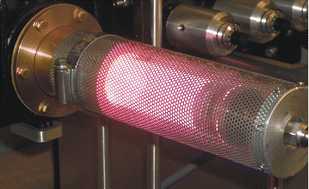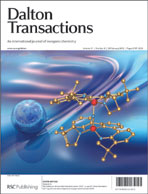Lanthanide zirconate phases Ln2Zr2O7 and Ln4Zr3O12 (Ln = Y, La, Gd, Dy, Ho, Yb) have been prepared using a microwave induced plasma methodology, which allows rapid synthesis using materials which do not couple directly with microwaves at room temperature. We describe the measurement of heating profiles of the precursor binary metal oxides which can be used to identify conditions conducive to the synthesis of more complex oxides. Uncontrolled heating which can be a feature of microwave synthesis of ceramics is not observed, allowing reproducible synthesis. Conventionally these phases are prepared at >1400 °C over hours or days and are being investigated for applications including the immobilisation of nuclear waste where rapid processing is important. Using the microwave plasma method, phase-pure materials have been prepared in minutes. Furthermore, it is clear that Ln2Zr2O7 and Ln4Zr3O12 also exhibit significant plasma-promoted dielectric heating (e.g. >2200 °C for Dy4Zr3O12) which is typically greater than either of the respective precursors, thus providing a driving force to rapidly complete the reaction.

You have access to this article
 Please wait while we load your content...
Something went wrong. Try again?
Please wait while we load your content...
Something went wrong. Try again?


 Please wait while we load your content...
Please wait while we load your content...